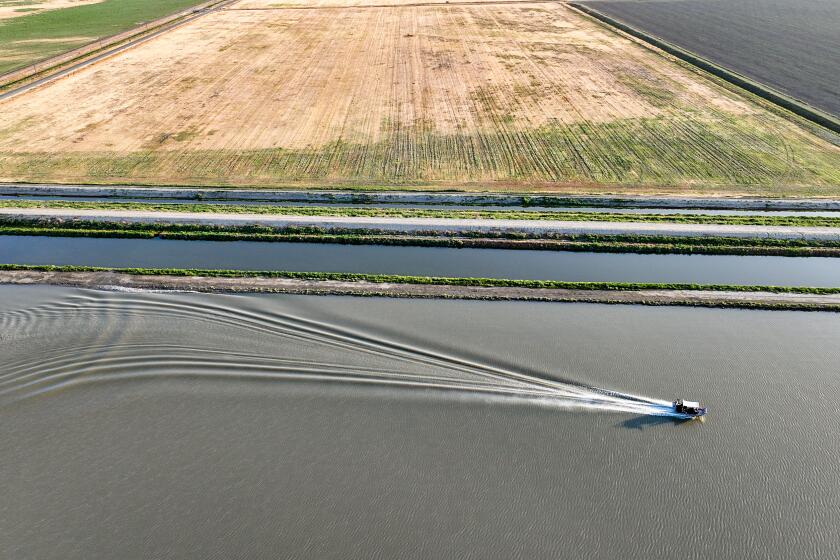Here’s what clean energy companies want from President Biden
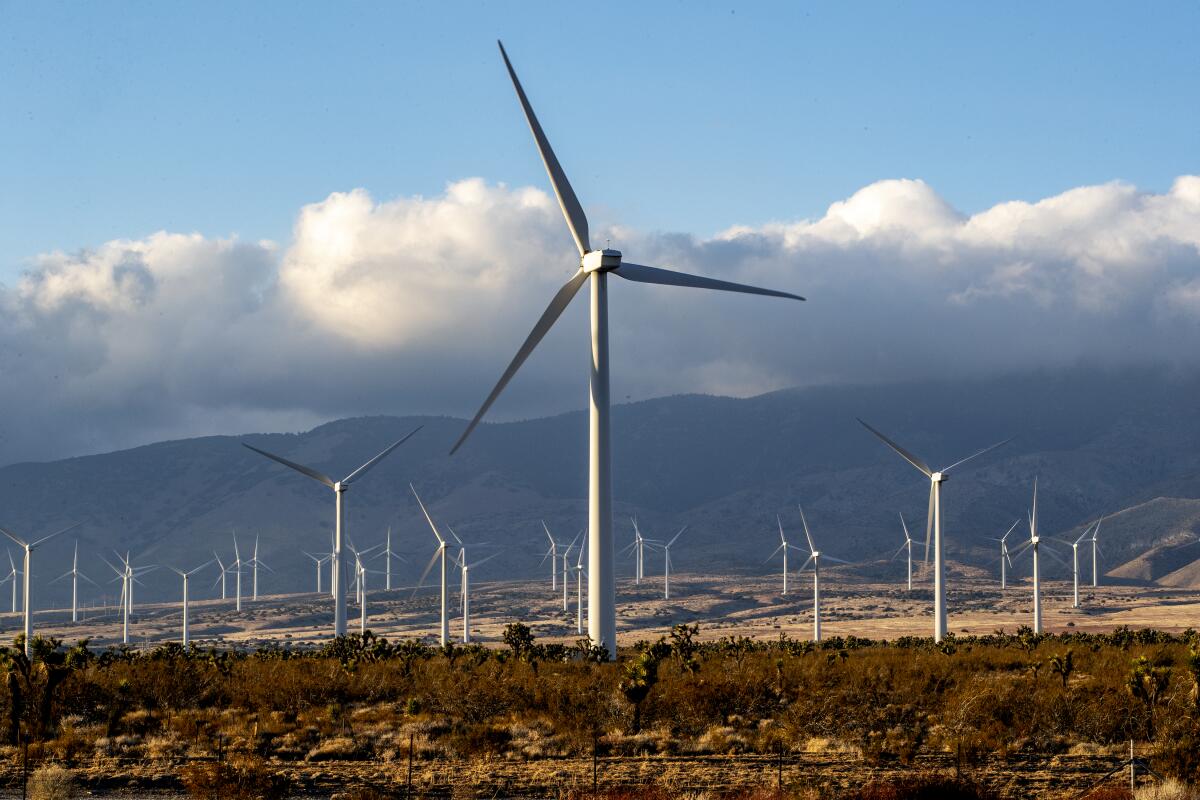
This is the March 11, 2021, edition of Boiling Point, a weekly newsletter about climate change and the environment in California and the American West. Sign up here to get it in your inbox.
When people talk about “energy companies,” they’re typically referring to the world’s oil and gas giants: Shell. Exxon Mobil. BP.
But as solar and wind power increasingly outcompete fossil fuels in the marketplace, renewable energy companies are flexing their newfound political and economic muscle. Tesla is the most high-profile example — last year the company’s market value surpassed that of Exxon Mobil — but it’s far from the only clean power provider with a big runway, especially as President Biden pitches climate-friendly energy as a centerpiece of his “Build Back Better” economic recovery plan.
Renewable energy companies like what they’ve heard from the Biden administration so far, and they’ve got high expectations for what’s coming — even with a 50-50 Senate whose Democratic control hinges on Joe Manchin, a coal-friendly West Virginian.
Toward a more sustainable California
Get Boiling Point, our newsletter exploring climate change, energy and the environment, and become part of the conversation — and the solution.
You may occasionally receive promotional content from the Los Angeles Times.
I’ve been trying to get a read of the political and policy landscapes in Washington, D.C., and California — especially after last month’s widespread blackouts in Texas, which fossil fuel-friendly elected officials incorrectly blamed on renewable energy.
Over the last few weeks, I’ve talked with three leading clean power industry figures: Lynn Jurich, chief executive of Sunrun, the nation’s largest rooftop solar installer, based in San Francisco; Tom Werner, CEO of solar energy provider SunPower, based in San Jose; and Heather Zichal, a former Obama administration official and CEO of the American Clean Power Assn. I asked them about the fallout from the events in Texas, what they’re looking for from Biden, and where California can do better.
Here are some highlights from our conversations.
On the events in Texas
Heather Zichal
Zichal, CEO of the American Clean Power Assn., doesn’t think the false narrative that renewable energy caused the Texas blackouts will stick. But she wonders where the blame will ultimately fall, and what the political consequences might be. So far, the head of the Texas power grid operator has been fired, and two of three members of the state’s Public Utilities Commission have resigned.
“You’re going to see the bogeyman. I’m just not quite sure who that is yet,” Zichal said.
Zichal hopes the conversation in Washington can focus on avoiding a repeat of what happened in Texas. She sees a role for technologies with bipartisan support, including an expanded transmission grid and more energy-storing batteries.
“That’s not just a Texas issue. How do we as a nation prepare for the weirding of weather?” she asked.
Lynn Jurich
Not surprisingly, the Sunrun CEO told me the Lone Star State’s winter storm-induced grid emergency “underscores the power of a decentralized system.” Rooftop solar installers argue that a smaller, nimbler energy system — with more homes and communities able to operate independently of the big grid — offers greater protection against climate-driven extreme weather.
“We have hundreds of customers with batteries in Texas. We were pleased that they powered through the storm,” Jurich said. “We even had [electric utility] customers whose power was out for more than 50 hours. Even though it’s winter and there’s a storm, the sun came out, and it recharged the battery, and the system was able to run uninterrupted for multiple days.”
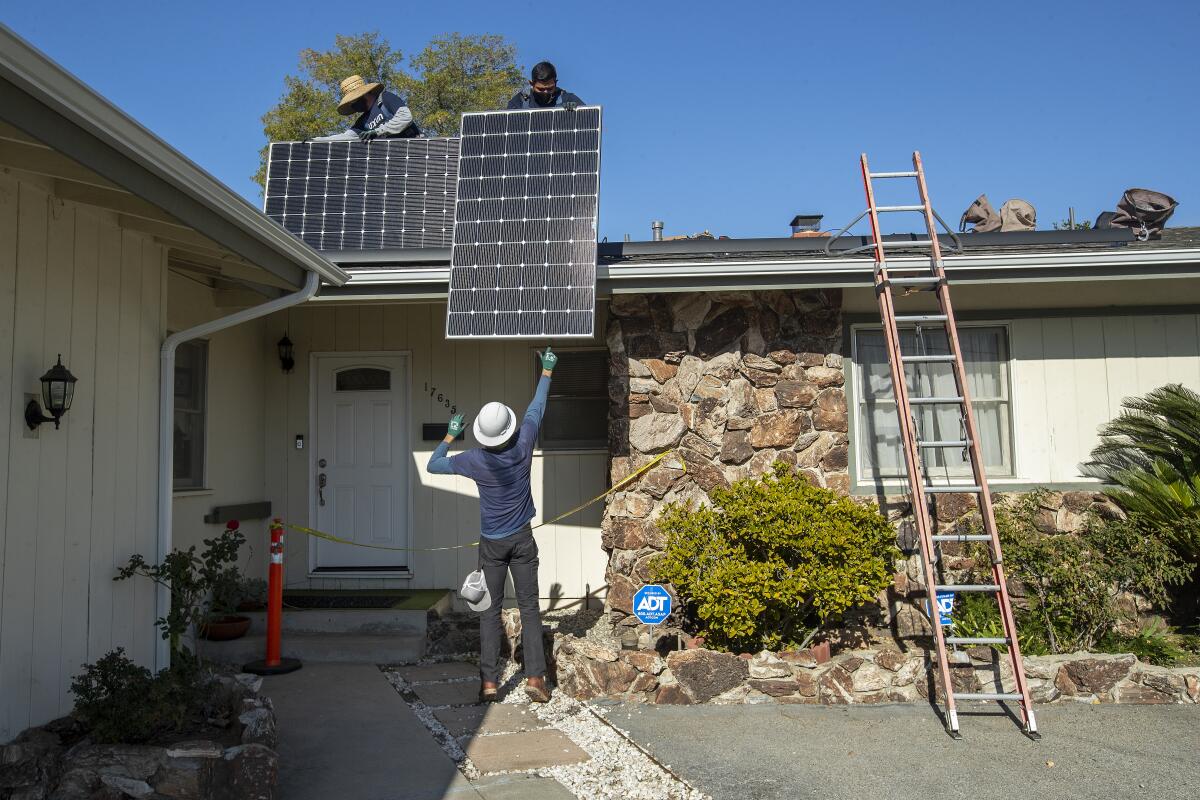
Tom Werner
SunPower sells solar panels through a network of hundreds of local dealers, and also through direct sales. In Texas, the company saw a 376% jump in digital appointments between the first week of January and the week following the massive blackouts.
“It’s driven by the fact that solar still worked when power was out,” Werner said. “And if you had a battery, you had power longer.”
On the Biden administration
Heather Zichal
For renewable energy providers, tax and trade policies are top priorities. Companies want to see stand-alone tax credits for investing in power lines and giant batteries, as well tweaks to existing solar and wind tax credits to make them easier to use. They’re asking for an end to tariffs imposed by President Trump that have raised the cost of solar panels and wind turbines.
Companies also want the administration to ease the permitting process for new power lines, which is notoriously difficult and time-consuming. Without the ability to move more solar and wind power from where it’s abundant to where it’s needed, “we could potentially have a huge bottleneck in terms of our ability to deploy clean energy,” Zichal said.
A speedier approval process for solar and wind farms on public lands would also help. It’s another tricky issue, with federal officials navigating a delicate balance between fighting climate change and protecting sensitive ecosystems from development.
“Just because we’re clean power doesn’t mean that the permitting issues are easy to wipe off the books,” Zichal said.
Tom Werner
The SunPower CEO wants to see the federal investment tax credit for solar power — long a driver of the industry’s growth — extended for another five years. The credit is slated to be phased out completely for rooftop systems at the end of 2023.
“When financiers are comfortable, we can do larger financing, which means we can get economy of scale. An extension in time actually makes us more competitive today,” Werner said.
Tax credit extensions would take congressional action. Other policies pitched by Werner would not, including new rules from the Federal Energy Regulatory Commission that would make it easier for rooftop solar and battery installers to create “virtual power plants” that ease strain on the electric grid and help protect families from blackouts during extreme weather.
Lynn Jurich
In addition to supportive tax policy, Jurich hopes the Biden administration will push for all-electric homes that don’t have gas heating or cooking. The gas industry opposes all-electric requirements, but backers say they can help reduce emissions.
“We need to electrify as many of our buildings as possible, and power them with renewable resources,” Jurich said.
She also pointed to the solar industry’s support for an app that makes it easier for local building departments to quickly approve new rooftop installations — “like the Common App for solar.” The software has already been built by the National Renewable Energy Laboratory. Federal funding could help make NREL’s SolarAPP the standard for local governments nationwide, Jurich said.
On California climate policy
Lynn Jurich
Jurich is closely following the debate at the California Public Utilities Commission over the next iteration of net energy metering, the program through which rooftop solar customers are compensated for the electricity they produce. The state’s major private utilities — Southern California Edison, Pacific Gas & Electric and San Diego Gas & Electric — have joined a coalition urging state officials to reduce the amount solar customers are paid, saying net metering is an unfair subsidy that mostly benefits the wealthy.
The Sunrun CEO sees things differently. The advent of (relatively) affordable batteries and electric vehicles, she said, has “totally changed the discussion,” creating an opportunity for all-electric homes that can operate independently when needed while also serving as assets on the larger grid. It’s more important now than ever, she said, to maintain robust net metering rates.
“We should make sure we design it so we’re not stopping people from getting solar and a battery,” Jurich said.
Tom Werner
Getting solar power to lower-income homes, including apartments, is a priority for Werner. He noted that among low-income Californians who pay a discounted rate for electricity, 5% have rooftop solar — less than the overall 10% of Californians who have solar, but still a substantial number. He said his company wants to do more to make solar available to everyone, through “community solar” facilities that serve groups of households and easier access to financing for people with low credit scores.
“It’s changing, and we need to change faster,” Werner said.
A large fraction of the price of a solar system, he said, comes from “soft costs” such as customer acquisition and permitting. One thing that might help get those costs down? A bill from state Sen. Scott Wiener (D-San Francisco) that would require many cities and counties to use an “online, automated permitting platform” for rooftop solar installations, such as NREL’s SolarAPP.
Heather Zichal
Zichal has been talking with offshore wind companies looking to build off of California’s coast, where there’s not a single project close to construction even as the first in a wave of big East Coast projects nears federal approval. One obstacle is opposition from the military, which says towering ocean wind turbines could interfere with training exercises.
Zichal said she recently recommended to Gina McCarthy, Biden’s national climate adviser, that she designate someone on her team to “untangle all of these interagency squabbles.”
“A lot of those conversations cannot get resolved without putting people in a room and sorting it out,” Zichal said. “It’s just kind of what you’ve got to do. I’ve met a lot of angry four-star generals in my day.”
***
And now, here’s what’s happening around the West:
TOP STORIES

Five months ago, my colleague Rosanna Xia revealed that huge amounts of DDT were dumped off the Southern California coast decades ago. Now scientists and government agencies have mobilized a deep-sea expedition to figure out how bad it is. Rosanna has all the details, including the use of high-tech robots that one researcher compared to “underwater Roombas.”
Northern Italy’s terrible air quality may have contributed to the country’s devastatingly high coronavirus death toll, as Janna Brancolini reports in a scary but important story for The Times. Angelenos should take notice. I wrote last year about maps showing an overlap between high pollution burdens in L.A. County and neighborhoods with high COVID-19 case counts.
In other not great air pollution news, new research from UC San Diego suggests that tiny particles in wildfire smoke are more harmful than air pollution from other sources. Here’s the story from NPR’s Nathan Rott, who explains that researchers found an increase in Southern California hospital admissions of up to 10% during intense periods of wind-driven fire smoke.
POLITICAL CLIMATE
The Biden administration is moving forward with a comprehensive review of the federal oil and gas leasing program. But some lawmakers already have ideas about what ought to be changed. A bipartisan bill from Sens. Jacky Rosen (D-Nev.) and Chuck Grassley (R-Iowa) would require oil and gas companies to pay more for locking up public lands and extracting public resources, as Daniel Rothberg reports for the Nevada Independent. In related news, Floodlight and Wyoming Public Media report that the oil industry secretly helped shape a study that has been used by Republican lawmakers to bash Biden’s pause on oil and gas leasing.
Would paying farmers to better manage soil make a measurable difference to the climate? The Biden administration seems gung ho, but critics are worried it will be a giveaway to Big Ag and a tool for greenwashing, as my colleague Evan Halper reports. Less controversial (at least among climate advocates) is the COVID-19 recovery bill now approved by Congress, which includes $30 billion for public transit agencies and money that cities can use to shore up water systems, per the Atlantic’s Robinson Meyer.
Mexico is clamping down on private involvement in its energy systems, which critics say will favor polluting state-owned power plants that might otherwise be outcompeted. More details here from the San Diego Union-Tribune’s Rob Nikolewski, who takes a look at how Sempra Energy, a major player in the Mexican energy scene, is reacting. See also my recent story on Sempra’s efforts to appease President Andres Manuel López Obrador by proposing a new liquefied natural gas export terminal.
AROUND THE WEST
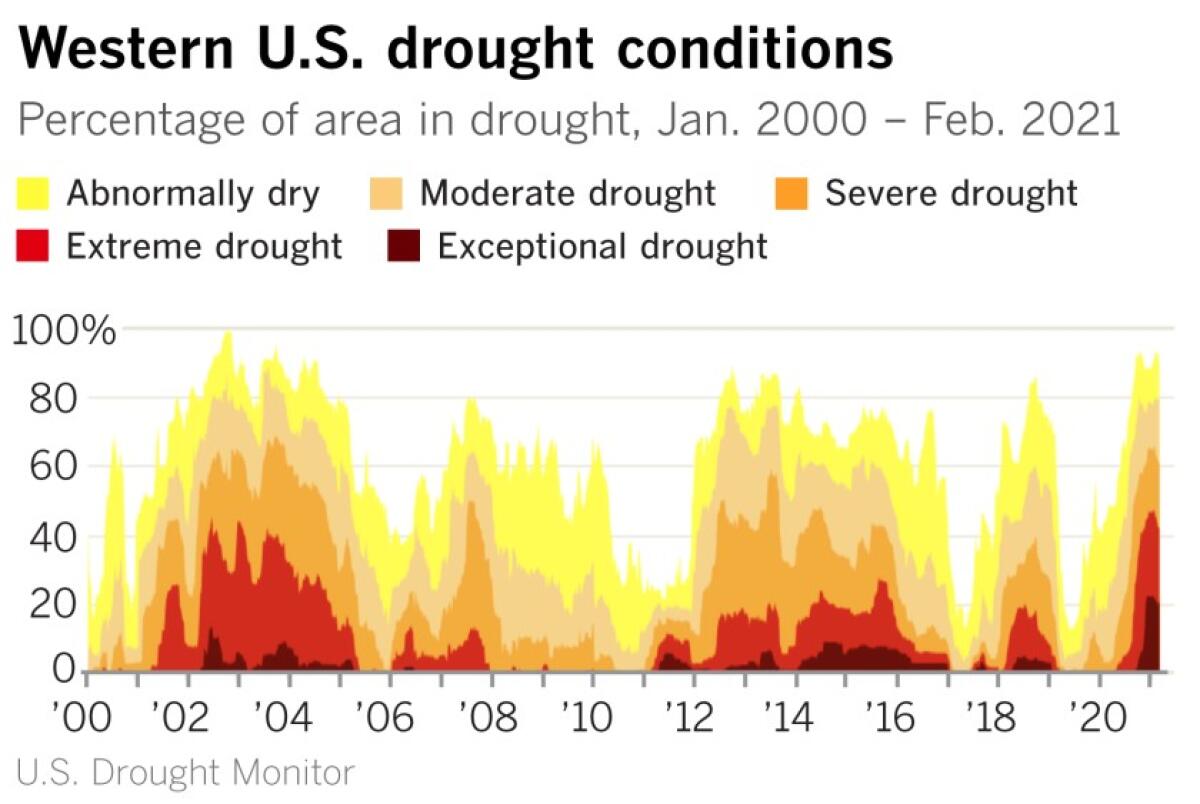
We are getting into very bad drought territory in the West. If the above chart doesn’t convince you, read this story by my colleague Paul Duginski, who says the outlook for a “March Miracle” isn’t encouraging, this week’s rain notwithstanding. In related news, the U.S. is on pace to set a modern avalanche death record this year, as Lila Seidman reports for The Times. Early-season snow in much of the West, followed by a long dry spell, has created a “persistent weak layer in the snowpack,” Lila writes.
Kern County gave upfront environmental approval for 40,500 new oil and gas wells. The county north of Los Angeles is the heart of the state’s extractive industry, and its supervisors voted unanimously to approve a single environmental analysis that will allow drilling permits to be issued within seven days of companies asking for them, as Janet Wilson reports for the Desert Sun.
L.A. Times columnist Steve Lopez is not happy with Gov. Gavin Newsom’s support for an Orange County desalination plant backed by a lobbyist friend of his. You can read Steve’s take here. In San Diego, meanwhile, desalinated ocean water is already part of the water supply. But the city is also ready to start building the long-awaited $5 billion Pure Water sewage recycling system, which is expected to generate half the local water supply by 2045, per David Garrick for the San Diego Union-Tribune.
THE ENERGY TRANSITION
The Northern California city of Petaluma has 16 gas stations in 14.5 square miles. That’s more than twice the number of gas stations per square mile in Los Angeles County, and it helps explain why the city is banning the construction of new gas stations as part of its push for carbon neutrality by 2030, as my colleague Faith E. Pinho reports. It’s likely gas station owners will need some kind of support as California transitions to electric vehicles, an issue raised by this story from KCRW’s Caleigh Wells.
Energy Secretary Jennifer Granholm says up to $40 billion in federal loan guarantees will be available for innovative clean energy projects. More details here from the AP’s Matthew Daly. The person responsible for doling out that money will be solar industry pioneer and energy podcaster Jigar Shah, newly appointed by Granholm to run the Energy Department’s Loan Programs Office. Greentech Media’s Jeff St. John wrote about what Shah’s priorities might be, including geothermal and offshore wind.
Natural gas companies continue to promote renewable gas as a promising strategy for cleaning up their pipelines. The Seattle Times’ Hal Bernton has a really good piece on this topic, focused on the biogas being fed into pipelines in the Pacific Northwest from one of the nation’s largest garbage dumps. He reached a similar conclusion to the one I did in this story last year: There’s lots of potential in renewable gas, but it’s unlikely to come anywhere close to fully decarbonizing the pipeline network.
ONE MORE THING
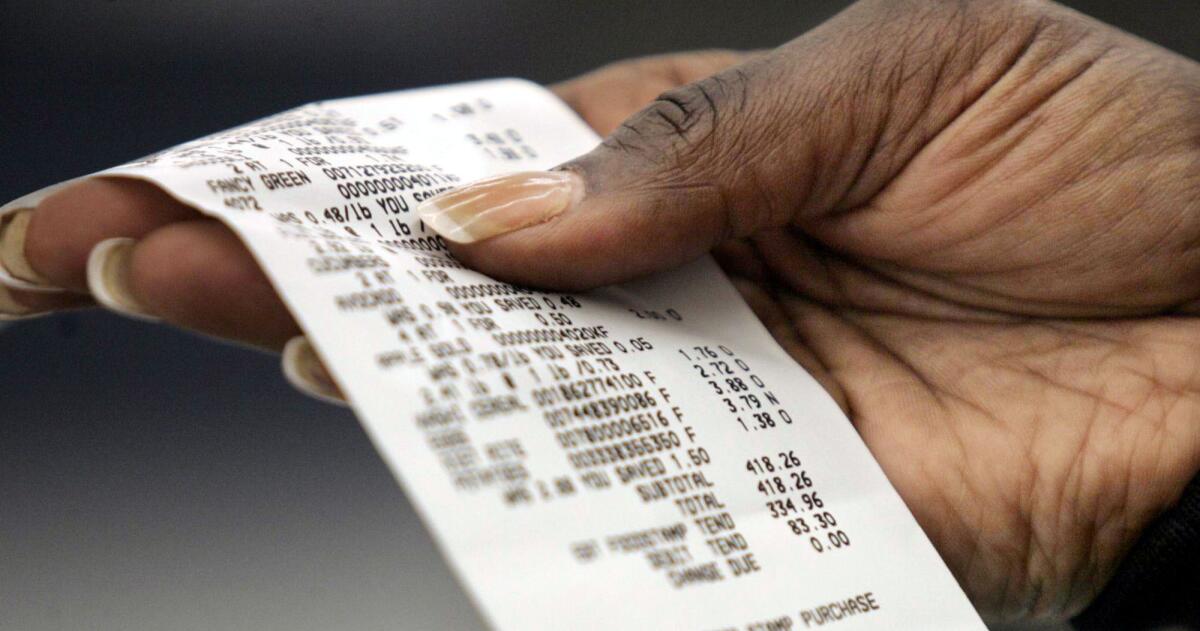
Personally, I find paper receipts annoying; they kill trees, and I definitely don’t want to touch them during a pandemic. So I was fascinated to read this column by my colleague David Lazarus, who says that although digital receipts can help fight climate change, they’re also “another nail in the coffin of your privacy,” since they require you to give companies your email address.
David ultimately concludes that he prefers digital receipts anyway, writing, “Your privacy is already to a large extent a lost cause. Let’s give the planet a fighting chance.” In a world of unavoidable trade-offs, that seems to me like a reasonable one.
We’ll be back in your inbox next week. If you enjoyed this newsletter, please consider forwarding it to your friends and colleagues.


